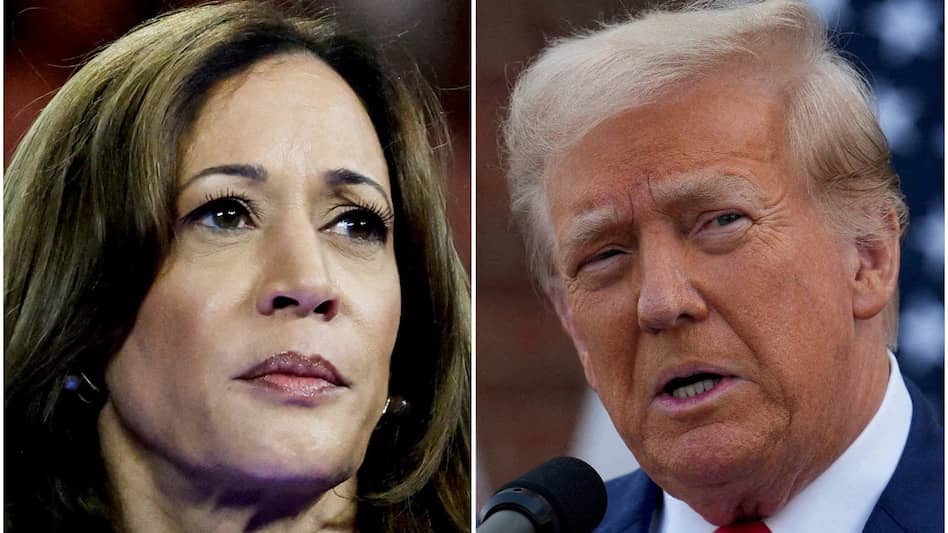By Burnett Munthali
With the U.S. national election only two days away, Vice President Kamala Harris and former President Donald Trump are making their final appeals to undecided voters, each aiming to solidify support in critical battleground states. Harris is focusing her energy on Michigan, a key swing state in the upper Midwest, while Trump targets Pennsylvania, North Carolina, and Georgia, rallying in areas where he hopes to maximize turnout from rural and suburban voters.
The significance of battleground states
The election map has boiled down to seven battleground states, with polling indicating that the race is neck-and-neck in these regions. The stakes are clear: the candidate who can secure victories in four or more of these contested states is positioned to clinch the presidency. States like Michigan, Pennsylvania, North Carolina, and Georgia have been fiercely competitive in recent election cycles, with outcomes often decided by slim margins. This has turned these states into essential destinations for Harris and Trump, who are now dedicating their final days to rallying support here.
Harris courts Midwest voters in Michigan
Harris’ visit to Michigan underscores her campaign’s strategy to appeal to voters in the upper Midwest, a region that has been decisive in past elections. Michigan, in particular, holds symbolic and practical importance for the Democratic Party. Having flipped blue for President Joe Biden in 2020 after voting for Trump in 2016, Michigan is once again a key target for Democrats, with Harris working to maintain support in Detroit and other urban areas where Democratic margins are crucial.
In a strategic move that highlights the campaign’s grassroots focus, Harris attended a church service in Detroit, where Bishop John Drew Sheard led the congregation in prayer for her. This interaction not only signifies Harris’ commitment to rallying support within the African American community—a core demographic for the Democratic Party—but also speaks to the cultural and moral appeal she hopes to evoke among undecided voters. By centering her visit on a community gathering, Harris underscores her campaign’s message of inclusivity and support for diverse communities.
Trump’s push in rural and suburban strongholds
In contrast, Trump’s campaign is honing in on states where his base of rural and suburban voters has traditionally shown strong support. His Sunday rallies in Pennsylvania, North Carolina, and Georgia reflect a targeted strategy to drive turnout in these regions. By choosing cities like Lititz, Kinston, and Macon, Trump is making a concerted effort to energize voters in areas where he can count on substantial backing. His goal is to offset Harris’ anticipated success in urban centers by maximizing votes in regions that lean heavily Republican.
The importance of Pennsylvania to Trump’s campaign cannot be overstated. Pennsylvania’s mix of Democratic cities and conservative rural areas makes it a classic battleground. Trump is attempting to recreate the conditions of his 2016 victory, where strong rural support counterbalanced urban voting patterns. North Carolina and Georgia are similarly pivotal; Georgia, especially, has seen rapid demographic changes and was a surprising flip to the Democrats in 2020. Trump’s push in these areas underscores his intention to bring these states back into the Republican column.
Divergent campaign styles
These final campaign events highlight the contrasting styles of Harris and Trump. Harris’ approach in Michigan is emblematic of her broader campaign strategy—building coalitions and fostering connections with diverse communities. Her emphasis on issues like economic equality, healthcare, and social justice resonates strongly with Democratic voters and independents who seek stability and progressive policies.
Trump, meanwhile, leans into his characteristic high-energy rallies, connecting with supporters through direct and often polarizing rhetoric. His speeches frequently emphasize economic recovery, energy independence, and a return to “American greatness”—themes that appeal deeply to his base. By appearing in smaller cities, Trump reinforces his identity as an outsider and populist, seeking to reclaim the White House by tapping into frustrations among rural and conservative voters.
A potentially historic election
This race is significant not only because of the stark contrast in policies and personalities but also because Trump is attempting to do what only one other president has achieved in U.S. history—serve non-consecutive terms. The election also comes at a moment of heightened polarization, with issues such as healthcare, reproductive rights, climate change, and economic recovery on the minds of many voters.
In Michigan, Harris aims to strengthen the Democratic hold on the upper Midwest, hoping to leverage support among urban voters and communities of color. Trump’s rallies in Pennsylvania, North Carolina, and Georgia reflect his strategy to consolidate Republican strongholds and counteract Democratic gains in these regions. Both candidates are focused on maximizing turnout and appealing to the undecided, with a clear understanding that each vote could sway the outcome in these crucial states.
Final thoughts
The race for the White House remains too close to call, with the final days of campaigning reflecting the broader themes of the election. Harris and Trump are doubling down on their core support bases while seeking to sway undecided voters in the most competitive states. Their divergent approaches reflect the sharp ideological divide in the U.S., with both candidates rallying their supporters in the hope of securing victory on Tuesday. As the country watches closely, the outcome in these battleground states will ultimately determine who becomes the nation’s 47th president, setting the course for America’s future over the next four years.




